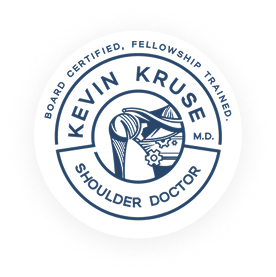When shoulder pain stems from calcific tendonitis—especially when conservative treatments fall short—barbotage offers an effective, targeted solution. This minimally invasive procedure is widely favored among shoulder specialists for its precision and high success rates.
This guide walks you through the full process of barbotage as it applies specifically to shoulder calcific tendonitis, from preparation all the way through to recovery.
What is Shoulder Barbotage?
Shoulder barbotage is a therapeutic procedure used to break down and remove calcium deposits within the rotator cuff tendons, most commonly the supraspinatus tendon. Under ultrasound guidance, the specialist inserts a needle into the calcium deposit, flushes it with saline, and then aspirates the loosened material.
This technique not only helps relieve pain but also restores mobility—without the need for invasive surgery.
Step 1: Initial Consultation and Diagnosis
Before considering barbotage, your shoulder specialist will conduct a thorough evaluation:
- Physical Examination: To assess pain, range of motion, and strength.
- Imaging Tests: X-rays help confirm the presence and size of the calcific deposit. Ultrasound offers a clearer, real-time view of the deposit’s consistency and location within the tendon.
Candidate criteria for barbotage:
- Persistent shoulder pain (especially during arm elevation or at night)
- Confirmed calcific tendonitis
- No improvement with rest, NSAIDs, or physical therapy
Step 2: Pre-Procedure Preparation
Once you’re scheduled for barbotage, there are a few things to prepare for:
- Medication Review: Inform your doctor about any blood thinners or anti-inflammatory drugs.
- Fasting: Not usually required, but always follow the specific guidance from your clinic.
- Clothing: Wear loose, comfortable clothing to allow easy access to the shoulder.
- Consent and Explanation: Your surgeon will walk you through the process and obtain informed consent before proceeding.
Step 3: The Barbotage Procedure – What to Expect
The entire process usually takes 30–60 minutes and is performed in a clinical setting.
Here’s a breakdown:
1. Positioning and Ultrasound Imaging
You’ll be seated or reclined with the arm positioned to expose the shoulder. A sterile ultrasound probe is used to locate the calcium deposit precisely.
2. Local Anesthesia
A small injection of local anesthetic numbs the skin and surrounding tissue. Patients generally feel pressure rather than pain during the procedure.
3. Needle Insertion
A fine needle is guided into the calcium deposit under ultrasound visualization.
4. Flushing and Aspiration (The Barbotage Itself)
Saline solution is injected to break up the deposit. The milky, toothpaste-like material is then aspirated through the needle. This process may be repeated until most of the visible calcium is removed.
5. Optional Steroid Injection
A corticosteroid is sometimes administered afterward to reduce inflammation and prevent further irritation.
6. Dressing and Observation
The area is cleaned and covered with a small bandage. You’ll be observed briefly to ensure there’s no adverse reaction.
Step 4: Post-Procedure Care and Recovery
Recovery from shoulder barbotage is generally swift, though minor soreness is expected for a day or two.
Recommended aftercare includes:
- Rest: Take it easy for 24–48 hours. Avoid overhead activities and heavy lifting.
- Ice Packs: Apply cold compresses for 15–20 minutes to reduce swelling.
- Pain Management: Over-the-counter pain relievers like acetaminophen may be used unless otherwise advised.
- Physical Therapy: Your specialist may recommend gentle exercises or a short course of physical therapy to restore shoulder mobility and prevent stiffness.
Step 5: Follow-Up and Long-Term Outlook
Most patients report marked improvement within 1–2 weeks, with full functional recovery in 4–6 weeks.
Follow-up may involve:
- Repeat ultrasound to assess remaining calcium
- Review of shoulder strength and mobility
- Adjustment of rehabilitation or therapy plan if needed
Barbotage does not guarantee that calcium won’t recur, but many patients experience long-lasting relief—especially with guided rehab and shoulder strengthening programs.
When Should You Call the Surgeon?
While complications are rare, you should contact your shoulder specialist if you experience:
- Fever or chills
- Redness, warmth, or discharge at the injection site
- Significant swelling that doesn’t improve with icing
- Severe pain that worsens after 48 hours
Barbotage is a highly effective outpatient procedure tailored for patients with shoulder-specific calcific tendonitis. For those struggling with persistent pain and limited motion, it offers a precise, non-surgical path to relief—one trusted by shoulder specialists around the world.
If you’re dealing with calcified deposits in your rotator cuff and conservative options haven’t worked, don’t wait. Speak with a shoulder-focused surgeon about whether barbotage is the right next step for you.
FAQs About Shoulder Barbotage
1. Will I be awake during the procedure?
Yes, the procedure is done under local anesthesia. You’ll be fully awake but should not feel pain.
2. How soon can I return to work or sports?
Most desk jobs can be resumed within 1–2 days. Sports or heavy lifting may require a few weeks.
3. Does barbotage remove all the calcium?
In many cases, most of the deposit is removed. However, complete removal isn’t always necessary for pain relief.
4. How many barbotage sessions are needed?
Most patients need only one session. If symptoms persist, follow-up imaging will guide further treatment.
5. Can barbotage prevent surgery?
Absolutely. It’s often used specifically to avoid more invasive surgical procedures.
The information in this article is for educational purposes and Dr Kruse may recommend alternate treatment options to best address the individual patient’s needs.

